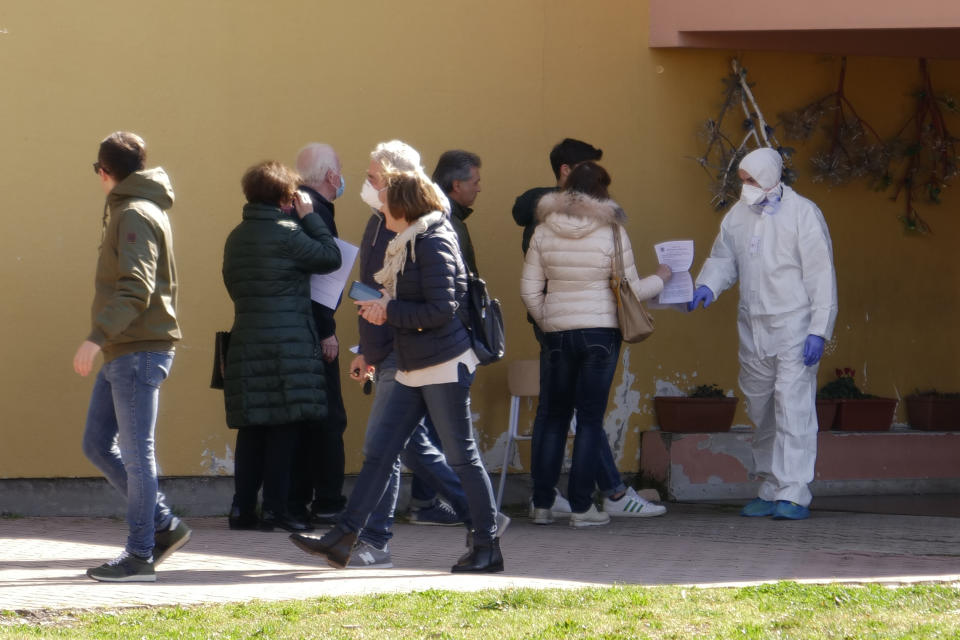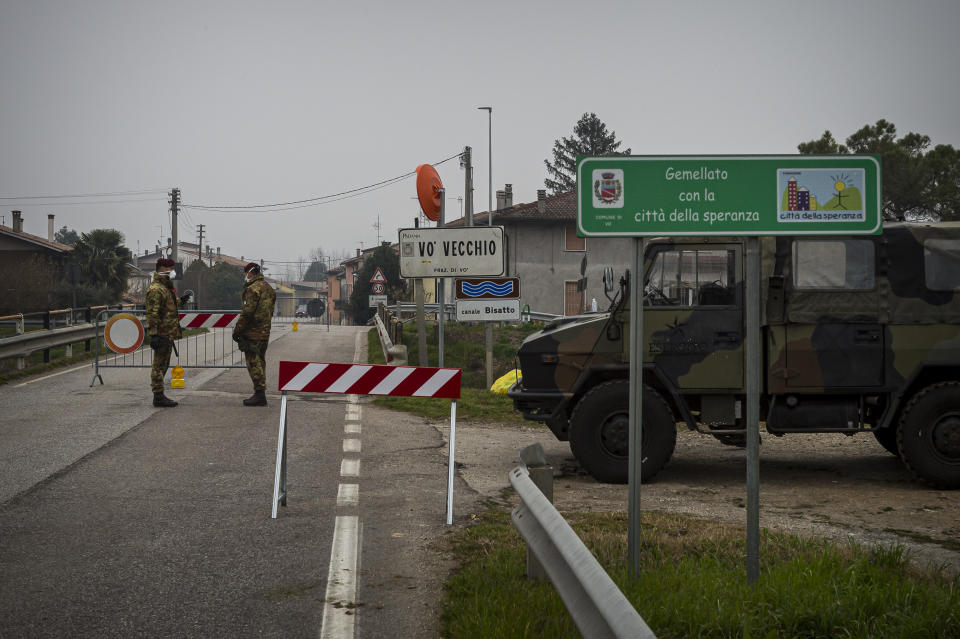Study of quarantined Italian town finds 40% of coronavirus sufferers showed no symptoms

A study carried out on a quarantined town in Italy has found that 40% of those infected with coronavirus presented no symptoms.
Researchers from Imperial College London and the University of Padova collected data on the rate of infections in the town of Vò, where most of the 3,200-strong population was tested.
Vò experienced Italy’s first COVID-19 death on 21 February and was put into immediate lockdown for 14 days.
Researchers tested most of the population both at the start of the quarantine and after two weeks and found that 2.7% of people had the virus at the beginning.

But two weeks later just 1.2%, or 29 people, tested positive and researchers found that on both occasions around 40% of those who had coronavirus showed no symptoms.
The results also show it took on average 9.3 days for the virus to be cleared from a patient’s body.
Adults living with infected people were found to be very likely to test positive, but there were no cases at all among children.
Professor Andrea Crisanti, from the University of Padua and Imperial, said: “Our research shows that testing of all citizens, whether or not they have symptoms, provides a way to manage the spread of disease and prevent outbreaks getting out of hand.
“Despite ‘silent’ and widespread transmission, the disease can be controlled.”
The results of the mass testing programme in Vò informed policy in the wider Veneto region, where all contacts of positive cases were offered testing.
“This testing and tracing approach has had a tremendous impact on the course of the epidemic in Veneto compared to other Italian regions, and serves as a model for suppressing transmission and limiting the virus’ substantial public health, economic and societal burden,” Prof Crisanti added.
Professor Enrico Lavezzo, from the University of Padua, said: “The result on asymptomatic carriers is key.
“We took a picture of the Vò population and found that about half of the population testing positive had no symptoms at the time of testing and some of them developed symptoms in the following days.
“This tells us that if we find a certain number of symptomatic people testing positive, we expect the same number of asymptomatic carriers that are much more difficult to identify and isolate.”
Coronavirus: what happened today
Read more about COVID-19
How to get a coronavirus test if you have symptoms
How easing of lockdown rules affects you
In pictures: How UK school classrooms could look in new normal
How public transport could look after lockdown
How our public spaces will change in the future
Help and advice
Read the full list of official FAQs here
10 tips from the NHS to help deal with anxiety
What to do if you think you have symptoms
How to get help if you've been furloughed

 Yahoo Movies
Yahoo Movies 
